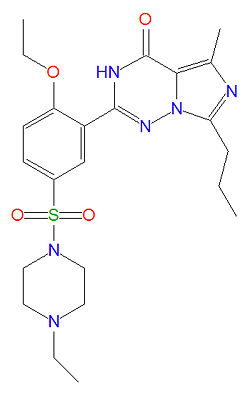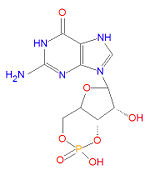Vardenafil: Difference between revisions
imported>David E. Volk m (→Up-to-Date Information: -> External llinks) |
imported>Caesar Schinas m (Bot: Replacing medical templates with CZMed) |
||
| Line 30: | Line 30: | ||
The most up-to-date information about this and other drugs can be found at the following sites. | The most up-to-date information about this and other drugs can be found at the following sites. | ||
{{CZMed}} | |||
== References == | == References == | ||
{{cite journal|title=Molecular Biology and Pharmacology of PDE-5-Inhibitor Therapy for Erectile Dysfunction|author=J. D. Corbin and S. H. Sharron|journal=J. Androl.|volume=24|pages=S38-S41}} | {{cite journal|title=Molecular Biology and Pharmacology of PDE-5-Inhibitor Therapy for Erectile Dysfunction|author=J. D. Corbin and S. H. Sharron|journal=J. Androl.|volume=24|pages=S38-S41}} | ||
Revision as of 00:29, 3 June 2009
|
| |||||||
| vardenafil | |||||||
| |||||||
| Uses: | erectile dysfunction | ||||||
| Properties: | PDE-5 inhibitor | ||||||
| Hazards: | cardiovascular risks | ||||||
| |||||||
Vardenafil, commonly known by the trade name Levitra®, is a selective phosphodiesterase type 5 (PDE-5) inhibitor used to treat erectile dysfunction (ED). It is more active in vitro than the nearly identical drug sildenafil (Viagra®), but is significantly different than tadalafil, another PDE-5 inhibitor used to treat ED.
Mechanism of action
By competitively binding to PDE-5 enzymes in smooth muscle and therefore inhibiting the binding of cGMP to PDE-5, the degradation of cGMP is reduced resulting in elevated levels of cGMP in the corpus cavernosum and its supply vessels. The elevated cGMP levels relax the smooth muscles, dilate the corporeal sinusoids and increase blood flow enabling an erection. cGMP levels are normally increased during stimulation by the release of nitric oxide in the corpus cavernosum. The nitric oxide activates guanylate cyclase, an enyme, which produces cGMP. Thus, vardenafil does not enhance the normal mechanism, namely increased synthesis of cGMP, but rather reduces its degradation.
Chemistry
The IUPAC chemical name for Vardenafil HCl is piperazine, 1-[[3-(1,4-dihydro-5-methyl-4-oxo-7-propylimidazo[5,1-f ][1,2,4]triazin-2-yl)-4-ethoxyphenyl]sulfonyl]-4-ethyl-, monohydrochloride. It is a nearly colorless, solid substance with molecular mass 579.1 g/mol.
Drug interactions
Because vardenafil has vasodilator properties that result in decreased blood pressure, the combined use of vardenafil with other vasodilators, such as alpha-blockers, must be done cautiously. Patients with a history of heart attacks, strokes, arrythmia, hypertension, retinitis pigmentosa or currently on bosentan therapy should also be cautious.
External links
The most up-to-date information about this and other drugs can be found at the following sites.
The most up-to-date information about Vardenafil and other drugs can be found at the following sites.
- Vardenafil - FDA approved drug information (drug label) from DailyMed (U.S. National Library of Medicine).
- Vardenafil - Drug information for consumers from MedlinePlus (U.S. National Library of Medicine).
- Vardenafil - Detailed information from DrugBank.
References
J. D. Corbin and S. H. Sharron. "Molecular Biology and Pharmacology of PDE-5-Inhibitor Therapy for Erectile Dysfunction". J. Androl. 24: S38-S41.

